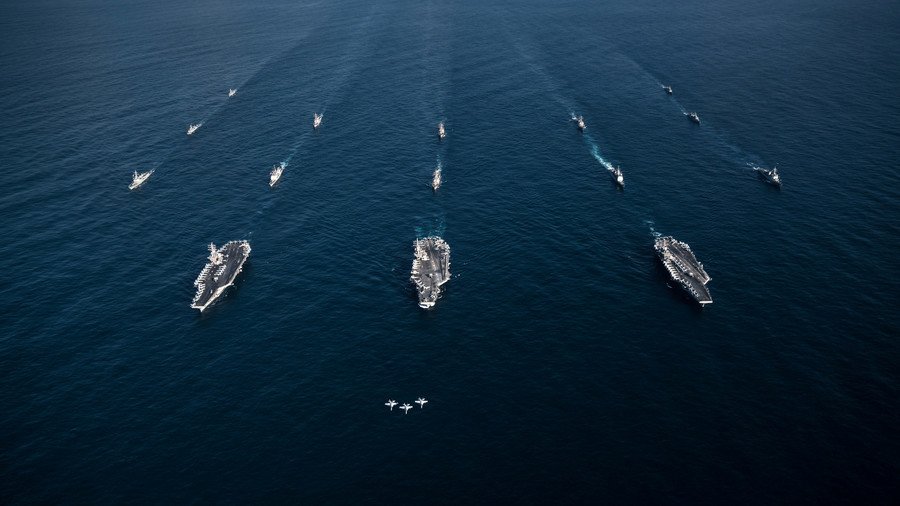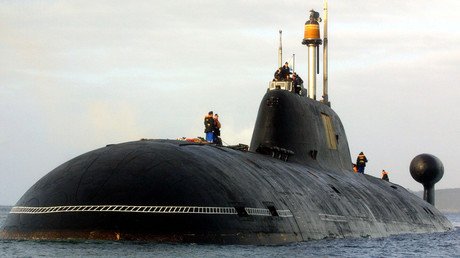Reactivated US 2nd fleet returns to North Atlantic ‘ready to fight’… guess who? (POLL)

Just seven years after shutting down operations, the US 2nd Fleet has been officially reactivated, with its admiral seeking to turn it into a menacing force “ready to fight” any “bad actor” it may sail into in the North Atlantic.
Fearing that “some bad actors” on the world stage “threaten the very birthright freedoms that we hold sacred” and are looking to “undermine and rewrite” the US-established world order, Vice Adm. Andrew Lewis, promised to “build a fleet that is ready to fight” along a stretch that extends from the East Coast of the US all the way to the Barents Sea, just off the coast of Norway and Russia, near the Arctic Circle.
“We are going to aggressively and quickly rebuild this command into an operational warfighting organization,” Lewis announced, as he took charge of the Second Fleet at the establishment ceremony at Naval Station Norfolk, Virginia.
HAPPENING NOW: #US2ndFleet establishment ceremony at Naval Station Norfolk. #ReadyToFighthttps://t.co/2jvspo1d0s
— U.S. 2nd Fleet (@US2ndFleet) August 24, 2018
The fleet, which previously had 126 ships and submarines in service, will once again “help to maintain America's maritime superiority,” chief of Naval Operations Adm. John Richardson noted on Friday. “A new Second Fleet increases our strategic flexibility to respond – from the Eastern Seaboard to the Barents Sea.”
Today, the @USNavy established #US2ndFleet with Vice Adm. Andrew "Woody" Lewis assuming command aboard @CVN77_GHWB. #ReadyToFight ℹ️ https://t.co/stV8660tGEpic.twitter.com/SjmXM2Dv8B
— U.S. 2nd Fleet (@US2ndFleet) August 25, 2018
After the fleet was disestablished in 2011 to save costs during the Obama administration’s proposed “reset” with Russia, most of its personnel, warships and responsibilities were transferred into Fleet Forces Command.
While it has yet to be announced which hardware will be transferred back under its command, at one point the Second Fleet had more than 90,000 personnel assembled between carrier strike groups (CSG) and amphibious ready groups (ARG). The fleet’s Aegis-capable ships also projected the American maritime ballistic missile defense capabilities overseas.
Over the past few years, especially after the outbreak of ‘Russiagate’ with the arrival of the Trump administration, the US and its allies have been increasingly accusing Russia of aggressive posturing and of threatening neighbors, slowly and gradually increasing their own military capabilities along its borders under this pretext.
Moscow insists that it has been forced to reform its military and develop new weapons systems, following US disregard for Kremlin concerns when Washington’s unilaterally withdrew from the ABM treaty in 2002. Russia continues to treat the global anti-missile system, including sites in Alaska, Romania, and Poland, as well as the Aegis-capable ships, as a potential national security threat that undermines mutual deterrence and power parity – and may lower the threshold of nuclear weapons use by giving Washington a false sense of invincibility.
READ MORE: US ABM shield in Europe may lead to sudden nuclear attack on Russia, Moscow says
Meanwhile, the reactivated 2nd Fleet will now once again sail close to the Arctic where Russia, compared to the US, has much more territorial waters and thus strategically invested interests, including utilization of the region's rich natural resources. The country is also conducting infrastructure projects along the Northern Sea Route and has built a number of military outposts to seal the northern frontier that was left virtually defenseless after the fall of the Soviet Union.
Like this story? Share it with a friend!















